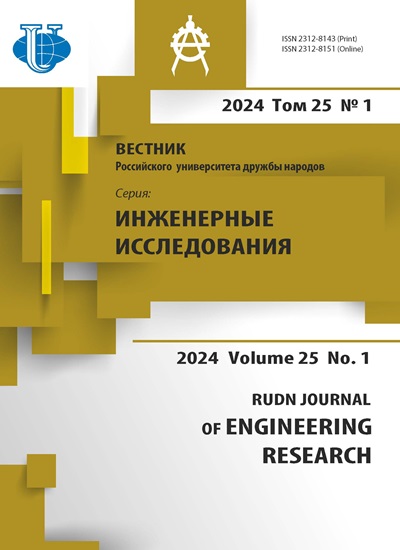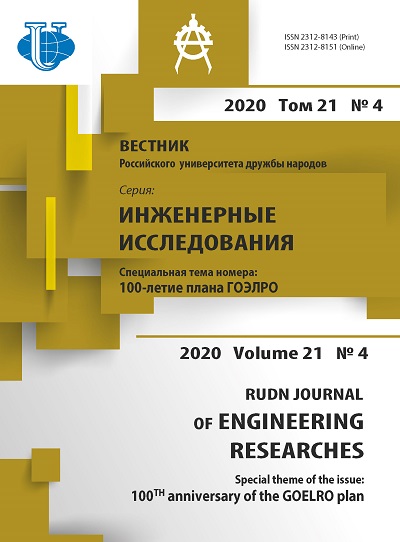Reusable interorbital tugs of megawatt class: problems and prospects
- Authors: Melnikov V.M.1, Razoumny Y.N.1
-
Affiliations:
- Peoples’ Friendship University of Russia (RUDN University)
- Issue: Vol 21, No 4 (2020): 100th anniversary of the GOELRO plan
- Pages: 281-289
- Section: Articles
- URL: https://journals.rudn.ru/engineering-researches/article/view/26734
- DOI: https://doi.org/10.22363/2312-8143-2020-21-4-281-289
Cite item
Full Text
Abstract
The possibilities of creating solar reusable megawatt-class interorbital tugs are analyzing. A comparison of solar and nuclear power plants is given, and the advantages of using solar systems are justified. On the basis of a comparative analysis of analogues, such as solar sails, solar reflectors for illumination from Earth's orbit, solar panels of space power plants, the advantages of using frameless centrifugal solar panels in comparison with frame analogues are justified. It is indicated that the design and development, as well as the production and technological reserve and test base are sufficient for the creation of a solar power plant in the Russian Federation. The authors point out the prospect of using oxygen-hydrogen fuels obtained by electrolysis of water in space, which greatly increase the speed of transport operations, and the need to create electro-magnetic accelerators for launching from Earth with large cargo flows. The design evaluation of the parameters of centrifugal solar panels with a capacity of 1 and 5 MW is given. The necessary funding for the work was estimated.
About the authors
Vitaly M. Melnikov
Peoples’ Friendship University of Russia (RUDN University)
Author for correspondence.
Email: vitalymelnikov45@yandex.ru
Professor of the Department of Mechanics and Mechatronics of the Institute of Space Technologies of the Academy of Engineering of the RUDN University, Academician of the K.E. Tsiolkovsky Russian Academy of Cosmonautics and International Academy of Informatization, Doctor of Sciences (Techn.), Professor
6 Miklukho-Maklaya St, Moscow, 117198, Russian FederationYury N. Razoumny
Peoples’ Friendship University of Russia (RUDN University)
Email: vitalymelnikov45@yandex.ru
Director of the Academy of Engineering of the RUDN University, Director of the Department of Mechanics and Mechatronics of the Institute of Space Technologies of the Academy of Engineering of the RUDN University, Academician of the K.E. Tsiolkovsky Russian Academy of Cosmonautics and International Academy of Astronautics, Doctor of Sciences (Techn.), Professor.
6 Miklukho-Maklaya St, Moscow, 117198, Russian FederationReferences
- Yarygin VI. Nuclear power of direct conversion in space missions of the 21st century. Izvestiya Vuzov. Yadernaya Energetika. 2013;(2):5–20. (In Russ.)
- Yarygin VI, Ruzhnikov VA, Sinyavsky VV. Kosmicheskie i nazemnye yadernye energeticheskie ustanovki pryamogo preobrazovaniya energii [Space and ground-based nuclear power plants for direct energy conversion]. Moscow: National Research Nuclear University MEPhI, 2015. (In Russ.)
- Sinyavsky VV. Advanced technology for nuclear electric propulsion orbital transfer vehicle Hercules. Space Technique and Technologies. 2013;(3):25–45. (In Russ.)
- Rajkunov GG, Komkov VA, Sysoev VK, Melnikov VM. Kosmicheskie solnechnye elektrostancii – problemy i perspektivy [Space solar power plants-problems and prospects]. Moscow: RUDN University; 2017. (In Russ.)
- Gorshkov VA, Muravlev AA, Shagajda OA. Hollovskie i ionnye plazmennye dvigateli dlya kosmicheskih apparatov [Hall and ion plasma engines for spacecraft]. Moscow: Mashinostroenie Publ.; 2008. (In Russ.)
- Melnikov VM, Elkin KS, Matyushenko IN, Rusakov AV. A megawatt electrodeless plasma engine as a new direction of the Russian cosmonautics. Cosmonautics and Rocket Engineering. 2015;2(81):47–53. (In Russ.)
- Squire JP, Olsen CS, Díaz FC, Cassady L, Longmier B, Ballenger MG, Carter M, Glover TW, McCaskill G, Bering E. VASIMR VX-200 operation at 200 kW and plume measurements: future plans and an ISS EP test platform. The 32nd International Electric Propulsion Conference (IEPC-2011-154) (Wiesbaden, 11–15 September 2011). Available from: http://electricrocket.org/IEPC/ IEPC-2011-154.pdf (accessed: 10.10.2020).
- Rajkunov GG, Komkov VA, Melnikov VM, Harlov BN. Centrobezhnye beskarkasnye krupnogabaritnye kosmicheskie konstrukcii [Centrifugal frameless large-size space structures]. Moscow: FIZMATLIT Publ.; 2009. (In Russ.)
- Semenov YuP, Branets VN, Grigoriev YuI, Zelenshchikov NI, Koshelev VA, Melnikov VM, Platonov VN, Sevastyanov NN, Syromyatnikov VS. Space experiment on the deployment of a film frameless reflector D = 20 m (“Znamya-2”)]. Kosmicheskie Issledovaniya. 1994;32(4–5):186–193. (In Russ.)
- Komkov VA, Melnikov VM, Harlov BN. Formiruemye centrobezhnymi silami solnechnye batarei [Solar batteries formed by centrifugal forces]. Moscow: Cheros Publ.; 2007. (In Russ.)
- Melnikov VM, Koshelev VA. Large space structures formed by centrifugal forces. Amsterdam: Gordon and Breach Science Publishers; 1998.
- Plokhikh VP, Buzuluk VI. A comparative analysis of different types of launching a reusable liquid-propellant spaceplane. Proceedings of the Fourth International Aerospace Congress IAC-2003. Moscow; 2003. p. 246–251. (In Russ.)
















